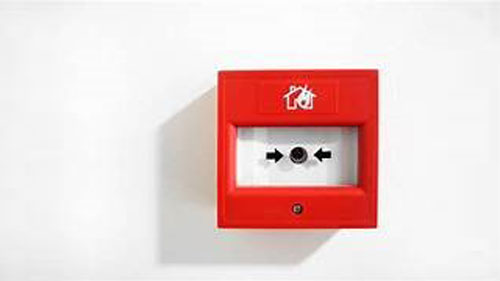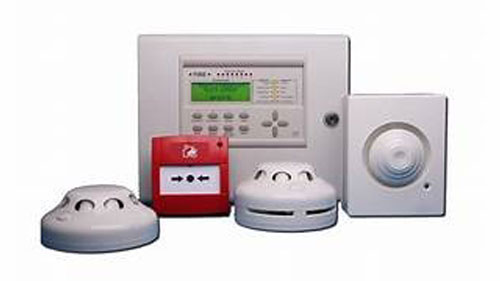Fire Alarms System
Fire alarms are crucial safety devices that play a vital role in protecting lives and property during a fire emergency. Whether you are at home, in a public building, or at work, knowing how to respond to a fire alarm and understanding its importance is essential for everyone's safety. Here are some important points related to fire alarms:
- Understanding Fire Alarms:
A fire alarm is an electronic device that detects the presence of smoke, heat, or flames and triggers an audible and visible warning signal to alert occupants of a potential fire.
Fire alarms are often connected to a central monitoring system, which can alert emergency services for a rapid response.
- Types of Fire Alarms:
There are three main types of fire alarms:
- Smoke Alarms: These are the most common type and detect smoke particles in the air.
- Heat Alarms: These detect an increase in temperature and are ideal for kitchens and areas with high levels of steam or dust, where smoke alarms might produce false alarms.
- Combination Alarms: These combine both smoke and heat detection for enhanced safety.
- Installation and Maintenance:
To ensure fire alarms work correctly, follow these guidelines:
- Install smoke alarms on every level of your home and near bedrooms. Place heat alarms in areas with potential fire hazards, such as the kitchen or laundry room.
- Test your fire alarms regularly, at least once a month, to ensure they work correctly.
- Replace batteries in battery-operated alarms at least once a year or when the low-battery signal sounds.
- Responding to a Fire Alarm:
When the fire alarm sounds, take it seriously and assume there is a real emergency. Evacuate the building immediately.
Never ignore a fire alarm or assume it is a false alarm. Delaying evacuation can be life-threatening.
- Fire Drill and Escape Plan:
Develop a fire escape plan for your home or workplace. Identify multiple escape routes from each room and choose a designated meeting point outside the building.
Conduct fire drills regularly to practice the escape plan with all occupants.
- Stay Low and Crawl:
If there is smoke, stay close to the ground and crawl to avoid inhaling toxic fumes. Smoke rises, so the air is cleaner near the floor.
- Do Not Use Elevators:
Always use the stairs during a fire alarm. Elevators can malfunction during a fire and trap occupants.
- Feel Doors Before Opening:
Use the back of your hand to feel doors before opening them. If a door is hot, do not open it, as there might be fire on the other side.
- Help Others:
Assist those who may have difficulty evacuating, such as elderly individuals, children, or people with disabilities.
- Once Outside, Stay Outside:
Never re-enter a burning building. Wait for emergency services to arrive and handle the situation.
Remember, fire alarms are an essential part of fire safety, and they save lives by giving early warning and allowing people to evacuate quickly. Taking fire alarms seriously and being prepared can make a significant difference during a fire emergency. Stay safe and be proactive about fire prevention measures.




